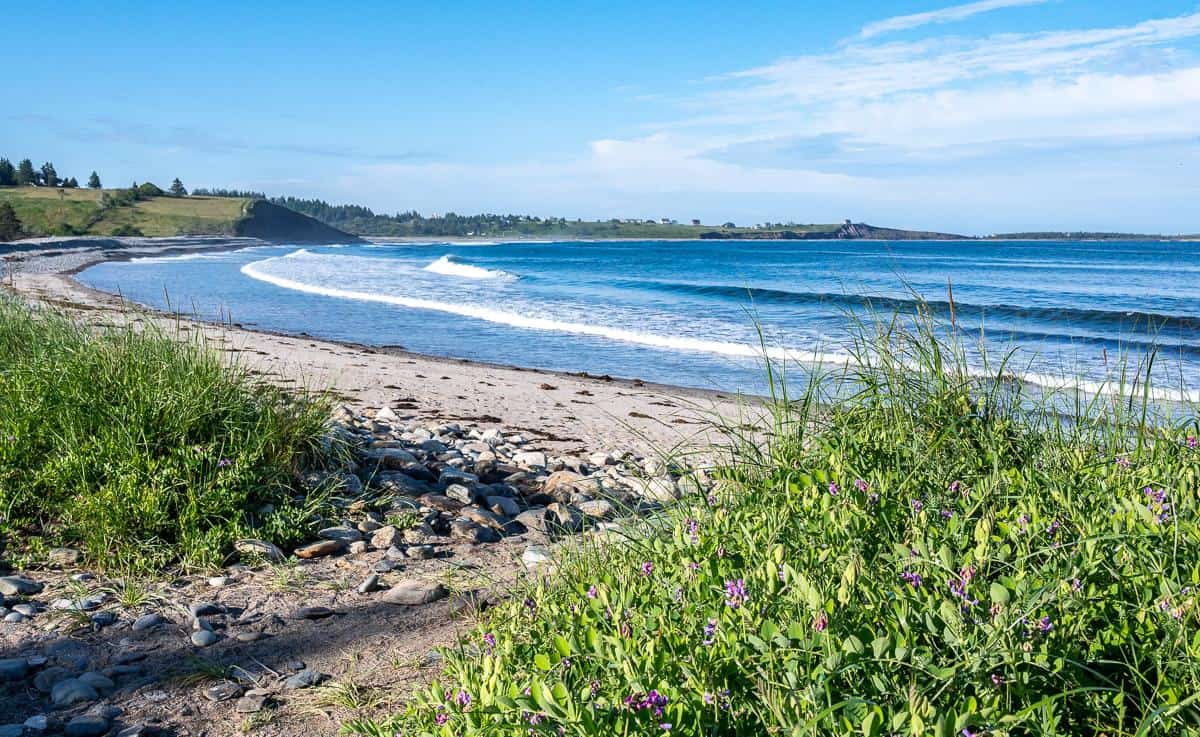The 5 Most Beautiful Castles & Palaces in Sintra, Portugal
11 min read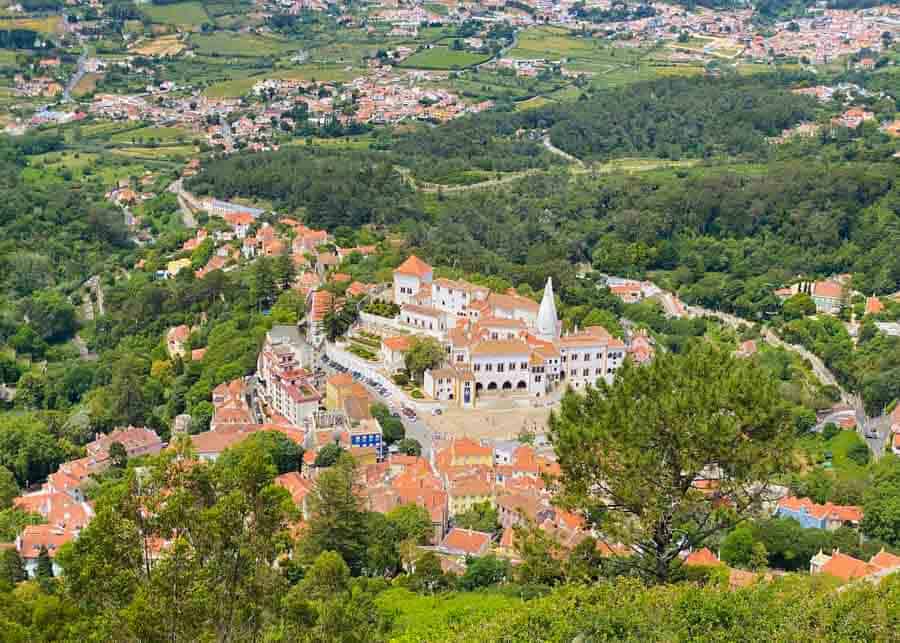
Table of Contents
Sintra is one of Portugal’s most picturesque cities, a mix of natural and man-made beauty: lush green valleys, rocky hilltops and sumptuous castles and palaces. This variety of beautiful scenery and historic buildings make Sintra an important part of any Portugal itinerary.

There is quite a lot to see and do in this small town full of romantic gardens, quaint restaurants and architectural delights. But without a doubt Sintra’s biggest appeal lies in the castles and palaces that were once the residence of the Portuguese royalty.

5 Amazing Castles and Palaces to Visit in Sintra, Portugal
1. Pena Palace (Palacio da Pena)
Pena Palace is Sintra’s most recognizable tourist attraction. The palace is colorful, flamboyant, and very eclectic. Perhaps too eclectic for some tastes, mixing Gothic, Manueline, Moorish and Renaissance styles.
Some people love Pena, others consider it a confusing melange of architectural styles. But whether you like this hodgepodge of styles or not, you shouldn’t miss Pena Palace. Its eccentric look is reminiscent of the extravagant Neuschwanstein – the dream castle of Ludwig of Bavaria.
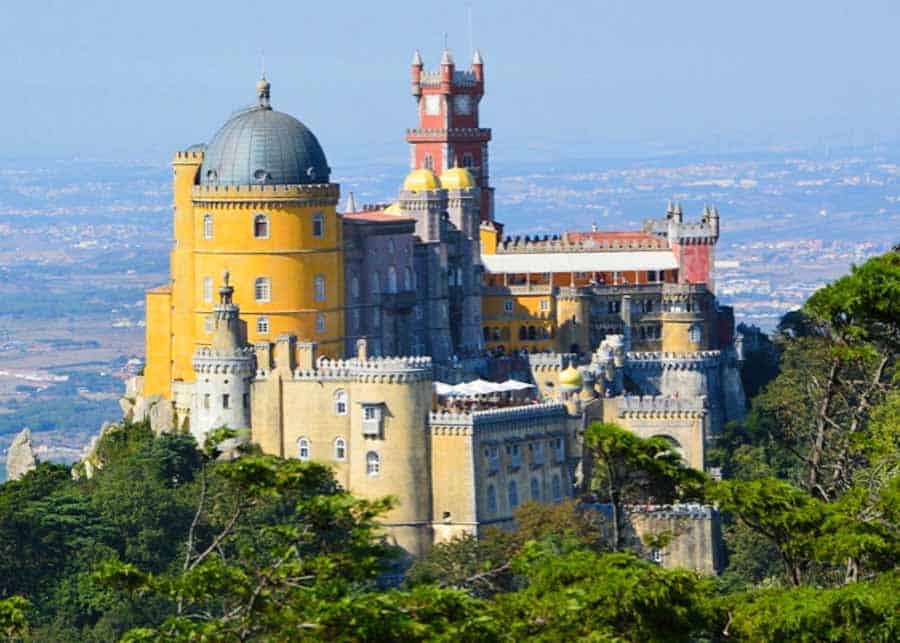
The history of the National Palace of Pena dates back to the 16th century, when a monastery stood on this site. After the great Lisbon earthquake of 1755 the monastery suffered great damages, but miraculously survived.
In 1838 King Ferdinand II acquired the estate and turned the former monastery into a summer residence for his family. The palace that resulted is one of the greatest examples of European Romanticism, which was characteristic to the 19th century.
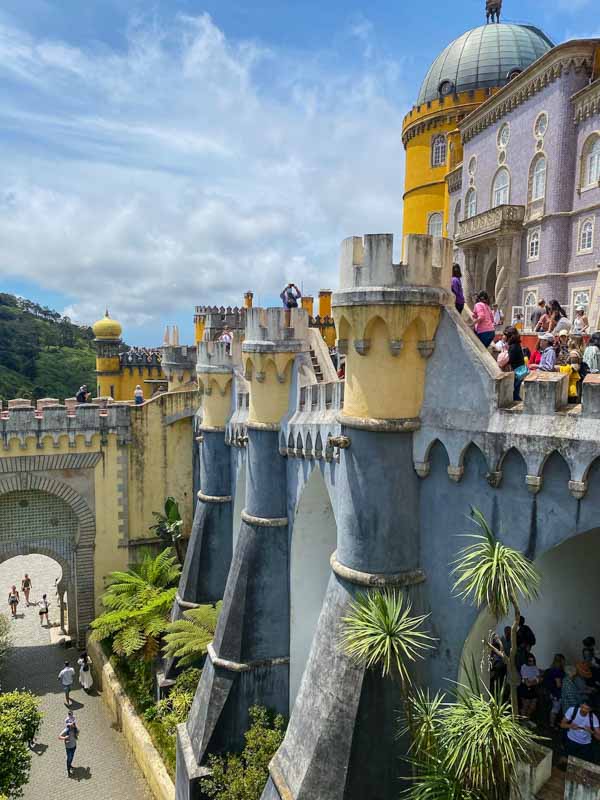
The exterior of the palace is a display of vivid colors, ramparts and large terraces decorated with statues of mythological creatures. The watchtowers have different shapes and the gateway is topped by Triton, the half-man half-fish god of the sea. As you explore the palace, you’ll notice that many of the elements of the former convent have been preserved, including the cloister, the sacristy and the chapel.
The interior of the palace is nice but not particularly impressive, featuring tile decorations and Trompe-l’oeil painted walls. The furniture has been left untouched after the last royals left the palace, in 1910.
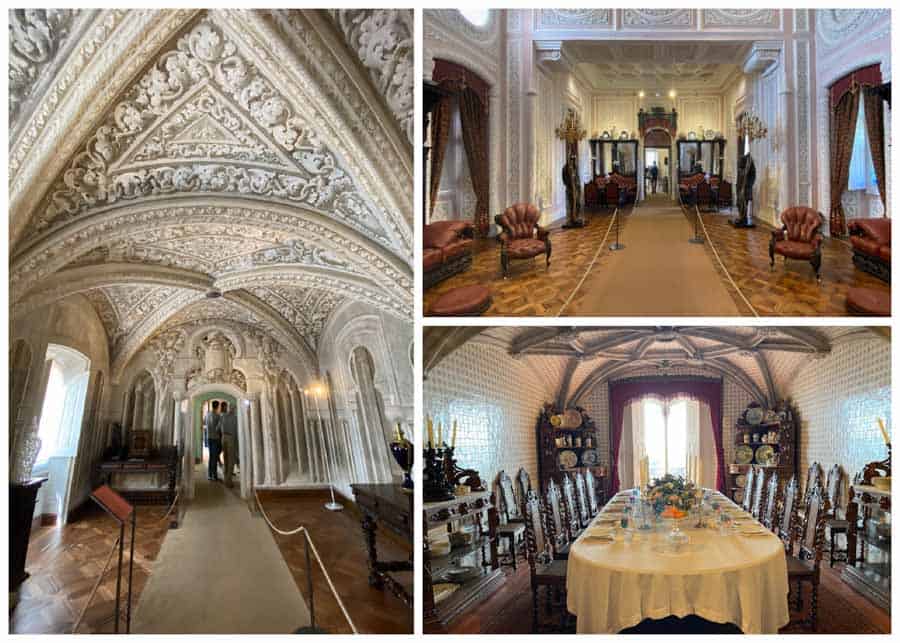
Sadly, the queue for getting inside is extremely long and moves very slowly. We spent over an hour waiting in line! Although we liked the rooms, I don’t think it’s worth spending so much time to see the interior. Especially when there are many other gorgeous castles and palaces to see in Sintra.
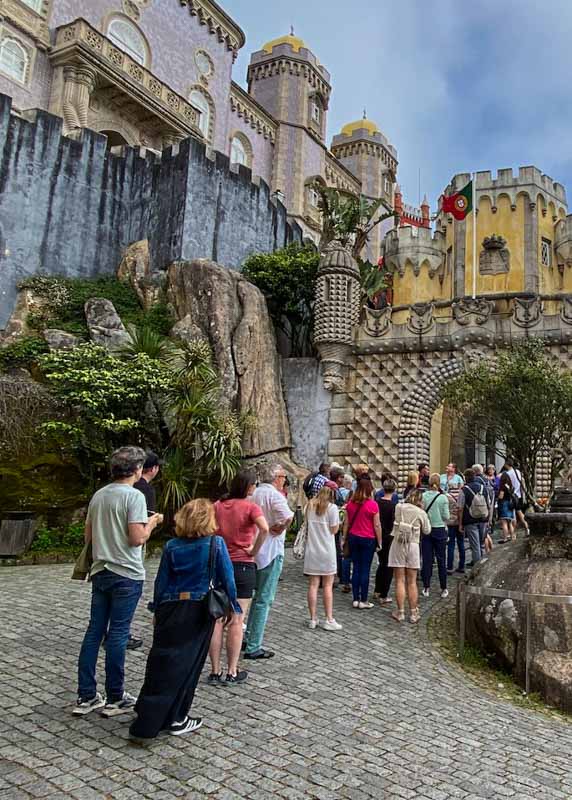
Admission Fees
Entrance fee for the palace and park is €14 for adults and €12.50 for children and senior citizens. If you decide to skip the interior, you can visit just the exterior –the terraces and ramparts and the park– for only €7 euro.
2. Moorish Castle (Castelo dos Mouros)
Just a short 10-minute walk from the Palace of Pena you’ll find the imposing ruins of the Moorish Castle. The fortress was erected sometime between the eighth and the ninth centuries and served as a watchtower that protected Lisbon and its surroundings.
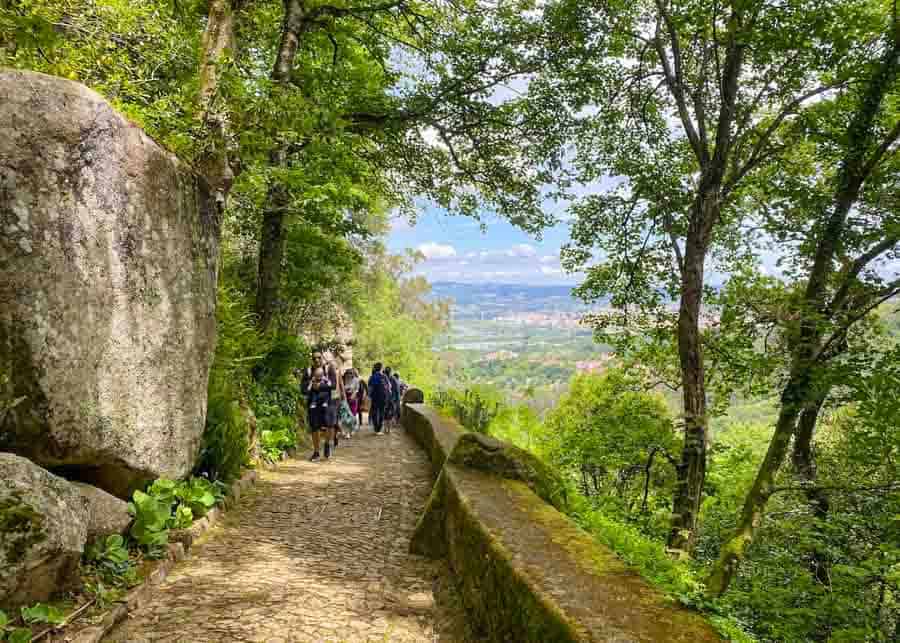
Initially, the Moorish Castle was occupied by the Moors who were the inhabitants of these lands at the time. By virtue of its location –atop of a very high granite promontory– the castle was an invincible natural defence to the north. The castle resisted the First Christian crusade, but surrendered voluntarily in 1147, when Sintra was handed over to Afonso Henriques, the first King of Portugal.
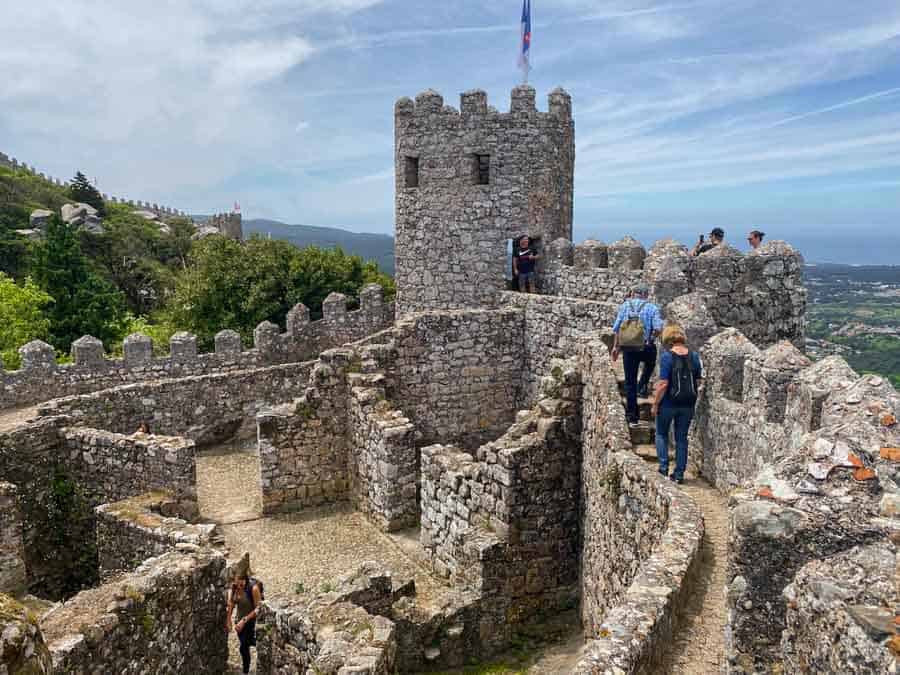
After a Christian settlement was established within the walls of the Moorish Castle, the Islamic population began to disappear. This gave way to the development of a Medieval town that was inhabited continuously through the 15th century.
After the great earthquake of Lisbon in 1755 Castelo dos Mauros was left in ruins. However, King Fernando II was determined not to let the once grandiose fortress disappear. So he started the restoration and consolidation of the outside walls and towers, putting the Moorish Castle on Sintra’s landscape again.
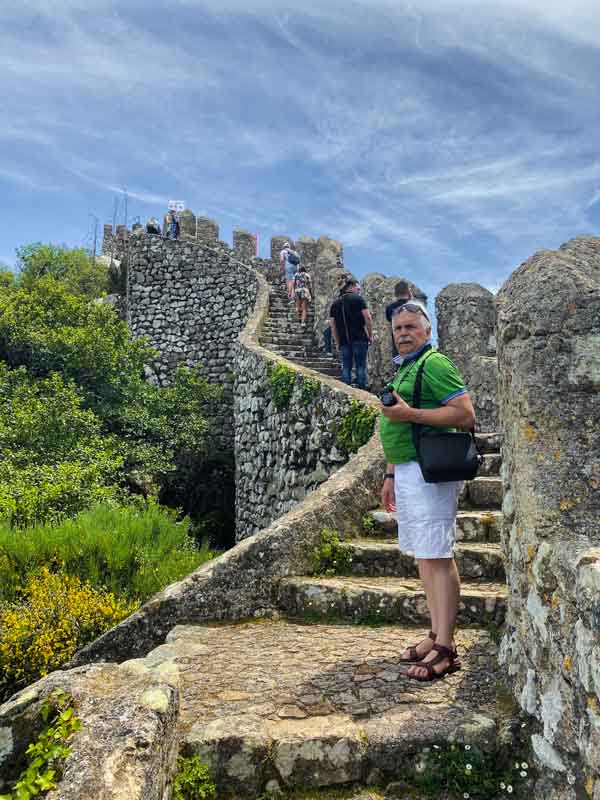
From the castle ramparts there is a magnificent panoramic view over the town of Sintra, Pena Palace, Palacio National de Sintra and Quinta da Regaleira, all the way to the Atlantic coast.
Admission Fees
Entrance fee for the Moorish Castle is €8 for adults and €6.50 for children and senior citizens.
3. Monserrate Palace, Sintra (Palácio de Monserrate)
This is a small but strikingly beautiful castle in Sintra which unfortunately not many visitors to Portugal know about. Monserrate Palace has a very interesting history. According to legend, in 1903 Afonso I of Portugal built on this site a chapel dedicated to Virgin Mary. On its ruins another chapel dedicated to Our Lady of Monserrate was constructed in 1540.
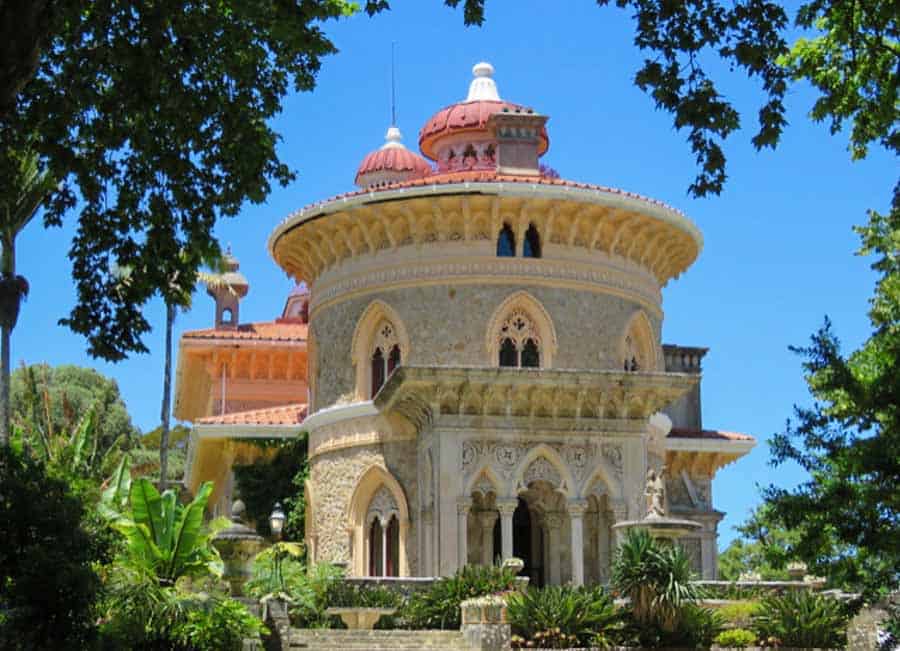
Over the years the estate changed hands many times and suffered quite a few restorations and abandonments. After a lengthy succession of owners, Francis Cook, a British trader and art collector, acquired the estate and became the 1st Viscount of Monserrate. He built here a neo-Gothic palace that became the summer residence of his family.
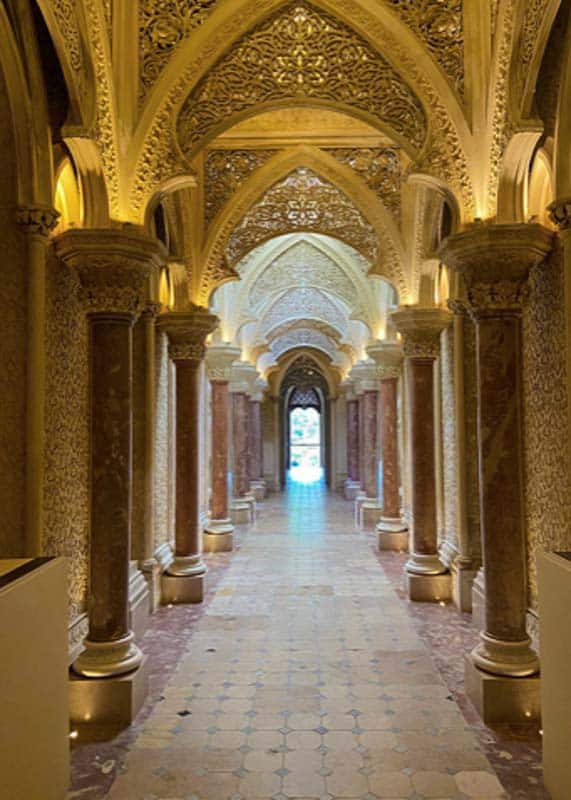
In 1949 the Portuguese government acquired the estate and declared it a Property in the Public Interest. Monserrate Castle became part of the cultural landscape of Sintra and was named a UNESCO World Heritage site In 1995.
The palace itself is very beautiful, embellished with a rich Arabian design and surrounded by classical English gardens. Although the Monserrate Palace is not furnished, it’s a fascinating place to visit both inside and out. The architectural style is also very unique, combining Moorish Revival architecture with Neo-Gothic elements.
Admission Fees
Entrance fee for the palace is €8 for adults and €6.50 for children and senior citizens.
4. Quinta da Regaleira
Quinta de Regaleira is a beautiful estate located near the historic center of Suintra. The land on which the palace stands belonged to Viscountess of Regaleira, a family of wealthy merchants from Porto. In 1892 Augusto Carvalho Monteiro, a Brazilian-Portuguese businessman and art collector who had a fascination with the order of the Knights Templar and the Freemasons.
After acquiring the property he decided to build here an enigmatic and extravagant place where he could collect symbols related to alchemy and Masonry. He also added a chapel and a luxurious park.
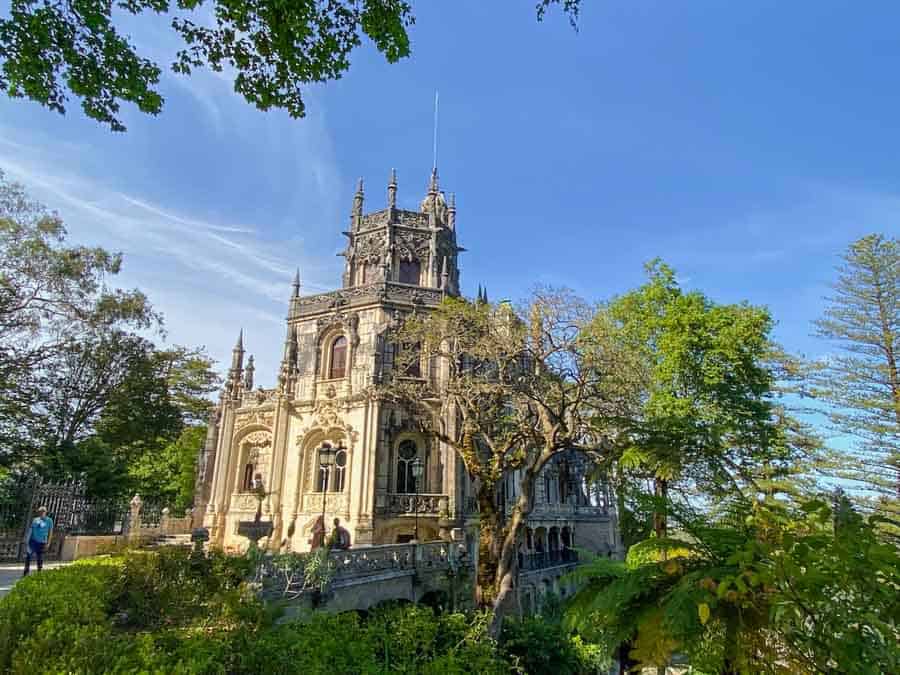
The palace is surprisingly small, but very complex displaying a mixture of Neo-Gothic architecture and ornately carved pinnacles. The main attraction of Quinta are actually the gardens, which are far from the traditional palace gardens that you’ll see in other castles in Sintra.
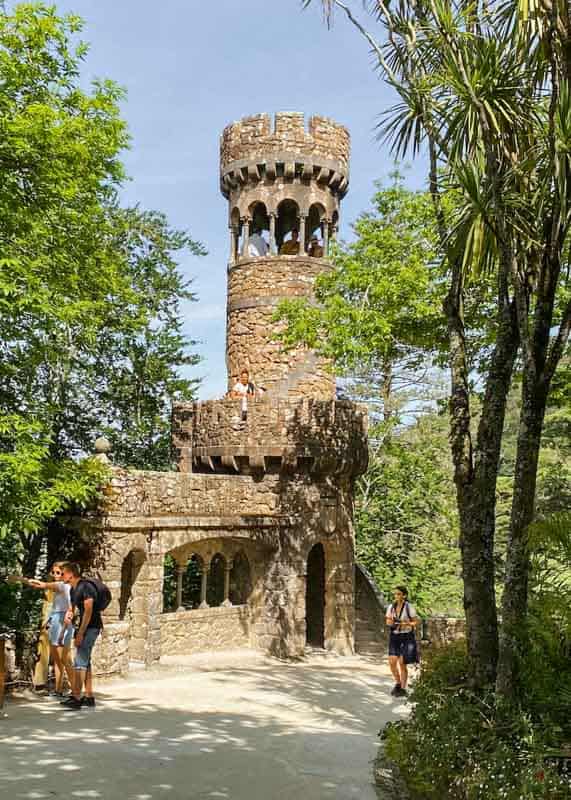
Here you’ll find not only beautiful waterfalls and fountains, but also strange towers, hidden passageway, mysterious grottoes and enigmatic stairwells.
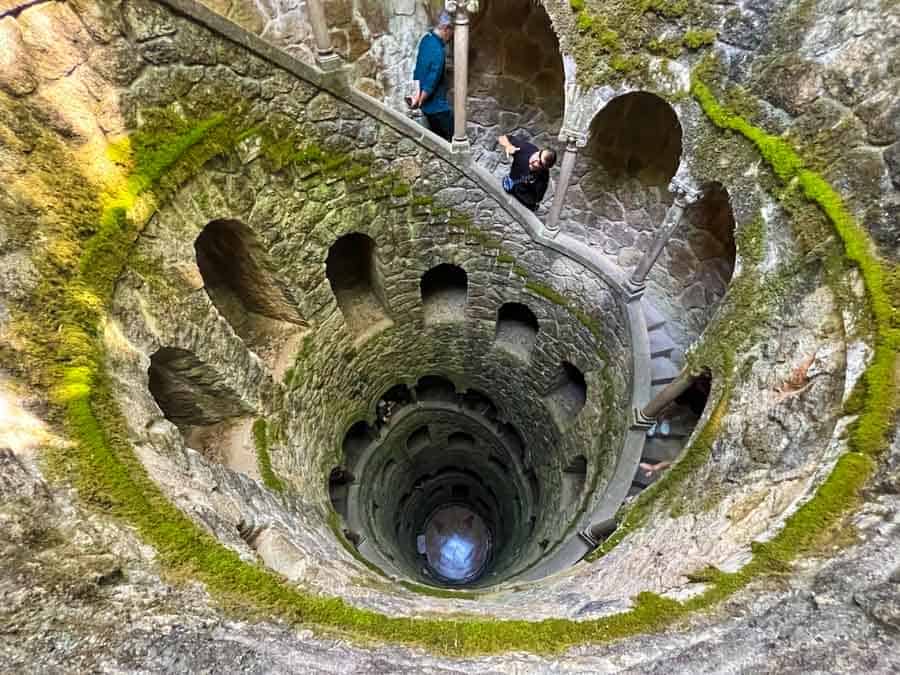
Although we visited the palace in June, which is the busiest season in Portugal, we didn’t find Quinta as crowded as the other castles in Sintra. It might have been pure luck, or the fact that we arrived here at the end of the day, just about 2 hours before they close.
Admission Fees
Entrance fee for Quinta da Regaleira is €18 for adults and €9 for children and senior citizens.
5. Palácio Nacional de Sintra
Sintra National Palace is located right in the center of the old town, about 1 km away from the train station. Its minimalistic exterior does not look very impressive, except for the two huge conical chimneys. When looking at it, you may not think this 14th-century building with whitewashed façades was once a royal residence. But wait until you get inside the palace.
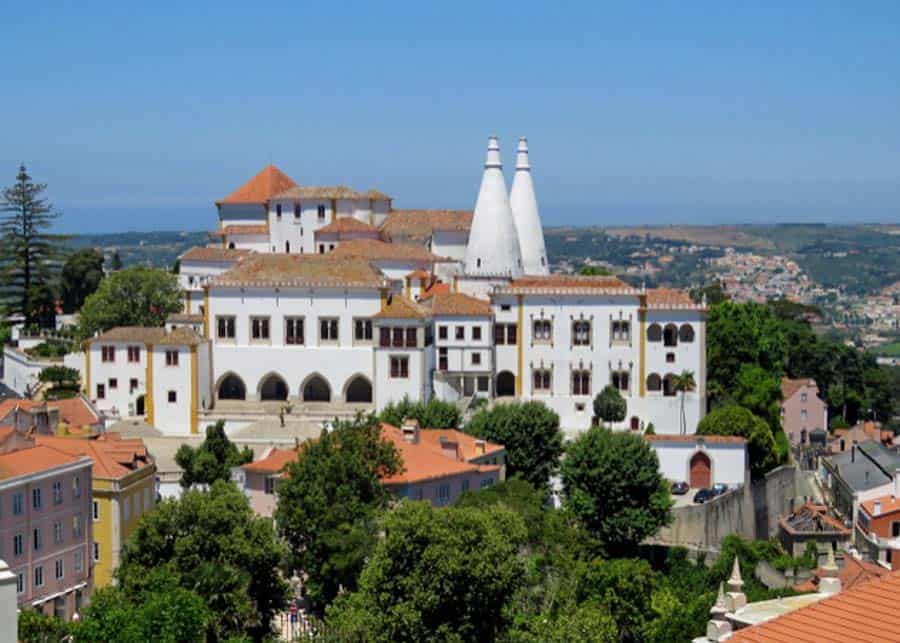
Hidden within the walls you’ll find a wonder of lavishly decorated state rooms designed to impress guests. Everywhere you turn you see intricately tiled walls and mosaic-like ceilings. The interior of the palace is richly furnished, and gives you a taste of the luxury that the kins and queens of Portugal enjoyed.
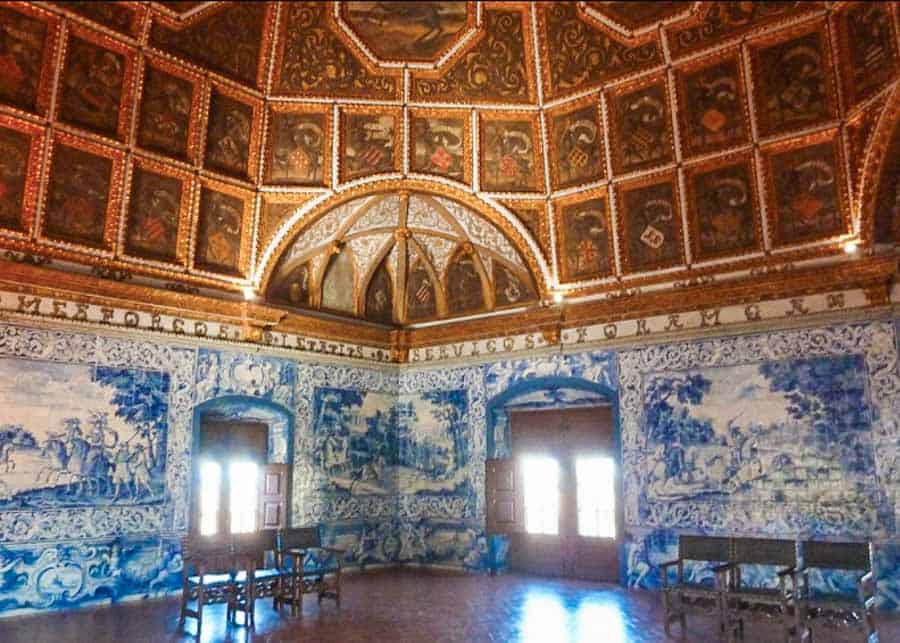
Like many other castles in Sintra, the National Palace is a mix of different architectural styles, including Moorish, Manueline, Gothic and Mudejar.
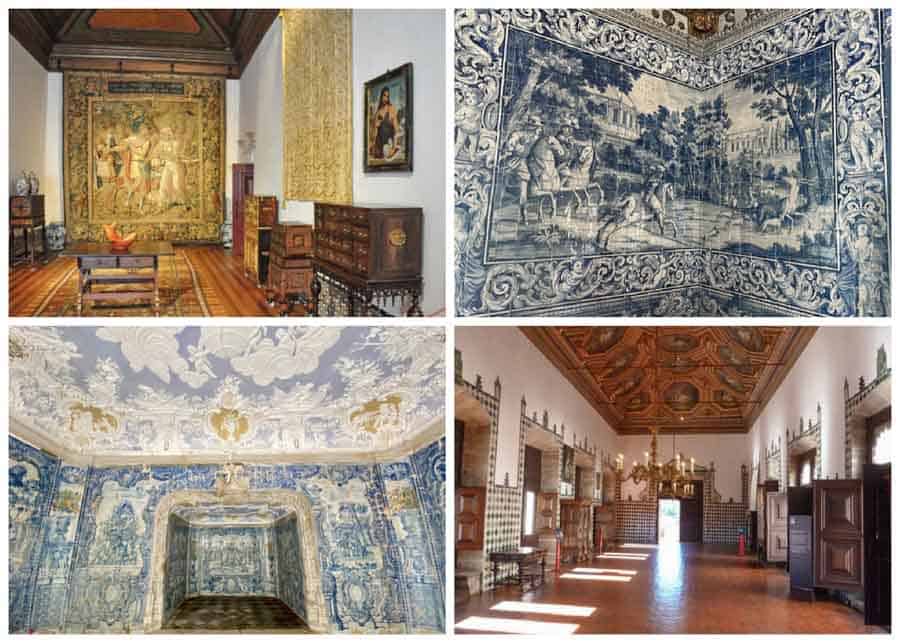
The National Palace of Sintra has been a UNESCO World Heritage site since 1995.
Admission Fees
Entrance fee for the National Palace is €10.00 for adults and €8.50 for children and senior citizens.

Tips for Visiting the Castles and Palaces in Sintra, Portugal
If you only have one day in Sintra, I suggest arriving here before 9:00 am since most castles receive their bulk of visitors after 10:00 am. Also, buying tickets online will save you a little time at the site.
Purchasing Tickets for the Castles in Sintra
One of the best ways to save a little bit of money when visiting Sintra’s attractions is to choose a combo ticket for the castles. There are a lot of combined tickets and organized day trips available online. Make sure to compare all the deals so you can pick the one that suits best your needs.
If you are traveling from Lisbon, you may also consider visiting the seaside town of Cascais and Cabo de Roca.
When purchasing your ticket to the Park and National Palace of Pena, you must now choose the day and time at which you want to visit the Palace.
The time indicated on your ticket corresponds to the time of entry in the Palace and not to the time of entry in the Park. The palace is located inside the Park of Pena, on the top of a hill, which means that after validating your ticket at the entrance you’ll still have to walk to the palace.
Unfortunately, even if you buy your ticket online you’ll still have to wait in line to see the interior of the palace. And those lines are even longer. So the “skip the line” option works only for the tickets.
READ NEXT: Lisbon Itinerary: How to Visit the Best of Lisbon in 3 Days
Which Castles to Choose if You Only Have One Day in Sintra
If you only have one day in Sintra you can visit two or maximum three castles. To properly see the buildings and the grounds you’ll need at least 2-3 hours for each castle.
Pena Palace is undoubtedly the most noteworthy one, but you should count on spending at least an extra hour standing in line. Despite the fact that they sell timed tickets, the lines to enter the building are unbelievably long.
In addition to Pena Palace, we recommend visiting the Moorish Castle, which is very close to Pena Palace, as well as Quinta da Regaleira and its gardens.
How Much Time to Spend in Sintra
Most people take only a day to visit Sintra, but that’s not enough time if you want to explore all its beautiful castles. Each one of them is a real gem and they all deserve a visit.
Besides its 19th-century Romanticist architecture, historic estates and villas, and royal palaces, Sintra is also famous for its beautiful gardens. Ideally you should plan on spending at least 2 days in this UNESCO town.
How to Get to Sintra from Lisbon
Given its proximity to Lisbon, Portugal’s capital city (only 28 km away), most people visit the castles in Sintra on a day trip. There are several ways to get to Sintra from Lisbon: you can either take the train, drive, or book a tour. Each alternative has its own advantages and disadvantages.
We believe the train is the cheapest and most convenient means of transportation between Lisbon and Sintra, but that is something you should decide for yourself. So here are your options:
By Train
There are two train routes between Lisbon and Sintra, so you can use either one depending on where you stay in Lisbon. One train leaves from Rossio Station, which is in the historic center of Lisbon. The other leaves from Oriente, via Areeiro Entrecampos and Sete Rios stations.
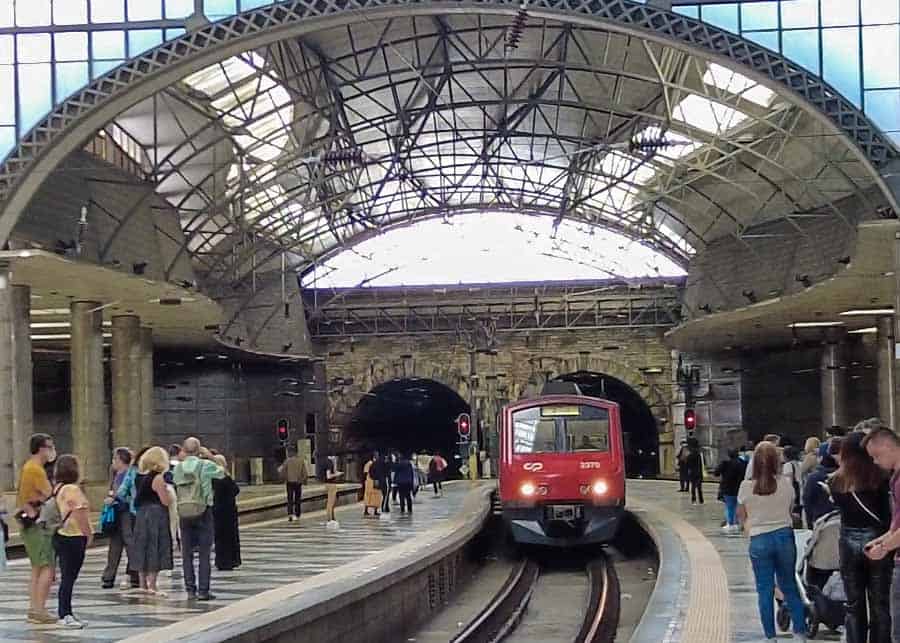
Both train stations are important commuter routes, so trains run regularly and up to 6 times per hour during the busy times of the day. To pay for the journey you can use the Lisbon Card, which gives you free transportation, or buy your tickets at the station. Train tickets for Sintra are not sold online.
The one way ticket price is €2.30/€1.15 (adult/child). There is no savings if you buy a roundtrip ticket, so the cost is €4.60/person. Also, there are no reserved seats on any commuter train between Lisbon and Sintra, but there are always seats available.
Once you arrive at the station you have a few options to reach the castles. Pena Palace and the Moorish Castle are 5 km away from the station.
- Hire a Tuk-Tuk to take you up to the palace.
- Walk to the town center (about 1 km)
- Take a cab or a Uber up to the castle.
- Hop on bus 434 which takes you all the way to Pena Palace and Castelo dos Mouros. Busses depart four times an hour from outside the train statin and the cost is €6.90/ticket. Unfortunately, the lines are very long so you’ll be wasting a lot of time waiting in line. I personally do not recommend this option.
By Car
Sintra is just a short drive from Lisbon via highway IC19. If you are renting a car in Lisbon, note that the IC19 is a commuter highway on which you’ll find heavy traffic during the peak hours. Also, access to Pena Palace from the Historic Center of Sintra is not possible by private car.
While driving to Sintra is shorter and faster than riding the train, finding a parking spot in town is very difficult. However, having your own means of transportation has some advantages. Once you get to Sintra you won’t have to scramble to find a cab. Or be forced to hire one of the expensive Tuk Tuk tour guides who crowd the train station offering their services.
By Bus
The bus trip from Lisbon to Sintra takes longer than the train, which is why I don’t recommend this option. The bus terminal is just outside the train station, either at Oriente or Sete Rios. The ticket costs €4/ticket and t
Organized Tours from Lisbon
There is a wide range of tour operators who offer day trips to Sintra from Lisbon. You can either check with your hotel, or pick one from the options below:
Pin this for later:



